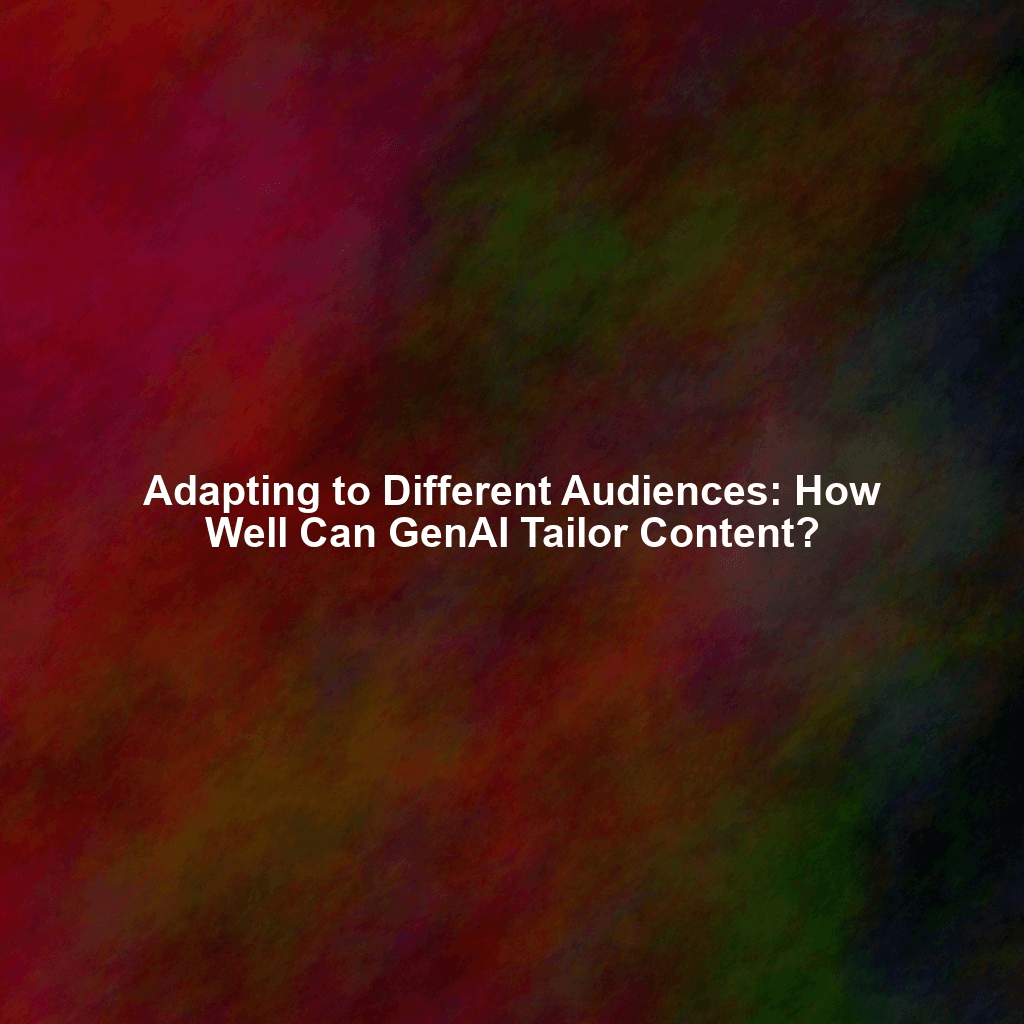The rise of Generative AI (GenAI) has sparked a revolution in content creation, promising faster turnaround times and increased efficiency. But can these AI models truly understand and adapt to the nuances of diverse audiences? This article delves into the capabilities of GenAI in tailoring content for varying demographics, interests, and levels of expertise, comparing its performance to that of experienced human writers and examining the implications for SEO and overall content quality.
The Promise of Personalized Content with GenAI
One of the most exciting prospects of GenAI is its potential to personalize content at scale. Imagine a marketing campaign that speaks directly to the individual needs and preferences of each customer. GenAI promises to make this a reality by analyzing audience data and generating content that resonates with specific segments.
Understanding Audience Segmentation
Before GenAI can tailor content, it needs to understand the target audience. This involves segmenting audiences based on various factors:
- Demographics: Age, gender, location, income, education.
- Interests: Hobbies, passions, preferred content formats.
- Expertise: Beginner, intermediate, or expert knowledge of the subject matter.
GenAI tools can leverage existing audience data from CRM systems, social media analytics, and website behavior to create detailed audience profiles. This data then informs the content generation process.
GenAI’s Strengths in Content Adaptation
GenAI excels at certain aspects of content adaptation:
Scalability and Speed
GenAI can generate a large volume of content quickly, making it ideal for campaigns targeting multiple audience segments simultaneously. This is a significant advantage over human writers, who may struggle to keep up with the demand for personalized content.
Data-Driven Insights
GenAI can analyze vast amounts of data to identify patterns and trends in audience behavior. This allows it to create content that is highly relevant and engaging, based on real-world data rather than intuition alone.
Grammar and Style Consistency
GenAI tools are generally proficient in grammar and style, ensuring that the content is well-written and error-free, regardless of the target audience. This can improve the overall quality and professionalism of the content.
Where GenAI Falls Short: The Human Touch
Despite its strengths, GenAI still faces challenges in truly understanding and adapting to the complexities of human audiences:
Nuance and Context
GenAI often struggles with subtle nuances in language, cultural references, and emotional intelligence. Human writers can better understand and convey these nuances, creating content that is more authentic and relatable.
Creativity and Originality
While GenAI can generate content that is grammatically correct and factually accurate, it often lacks the creativity and originality of human writers. Human writers can bring fresh perspectives and innovative ideas to the table, creating content that stands out from the crowd.
Ethical Considerations
GenAI can sometimes perpetuate biases present in the data it is trained on. Human writers can be more aware of these biases and take steps to avoid them, ensuring that the content is fair and unbiased.
SEO Optimization and GenAI: A Double-Edged Sword
GenAI can be a valuable tool for SEO optimization, helping writers to identify relevant keywords and create content that ranks well in search engines. However, it’s crucial to use GenAI responsibly to avoid keyword stuffing and other black-hat SEO tactics that can harm your website’s ranking.
Keyword Research and Integration
GenAI can quickly analyze keyword trends and suggest relevant keywords for a given topic. It can also help to integrate these keywords naturally into the content, improving its search engine visibility.
Content Structure and Readability
GenAI can assist with structuring content in a way that is both readable and SEO-friendly. This includes using headings, subheadings, and bullet points to break up the text and make it easier to scan.
Avoiding AI-Generated Content Penalties
Google’s algorithms are constantly evolving to detect and penalize low-quality, AI-generated content. To avoid these penalties, it’s important to use GenAI as a tool to enhance, not replace, human creativity and expertise. Ensure that the content is original, informative, and provides value to the reader.
The Future of Content Creation: A Hybrid Approach
The most effective approach to content creation involves a hybrid model that combines the strengths of GenAI with the skills and expertise of human writers. GenAI can handle tasks such as keyword research, content structuring, and grammar checking, while human writers can focus on the more creative and nuanced aspects of content creation.
By embracing this hybrid approach, businesses can unlock the full potential of GenAI while ensuring that their content remains authentic, engaging, and valuable to their target audiences.
Conclusion
GenAI has made significant strides in content adaptation, offering speed, scalability, and data-driven insights. However, it still lacks the nuance, creativity, and ethical awareness of human writers. The key to successful content creation lies in leveraging the strengths of both GenAI and human expertise, creating a hybrid model that delivers personalized, engaging, and SEO-optimized content that resonates with diverse audiences.
 Skip to content
Skip to content

